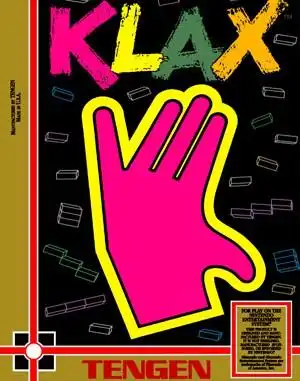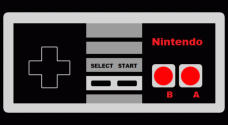Step right up, retro gamers! Let's talk about a game that might just send a little shiver of nostalgia down your spine – the one and only Klax. Forget falling blocks for a second; this 1990 Atari Games classic brought a unique twist to the puzzle genre, asking you to catch 'em, stack 'em, and make 'em disappear with a satisfying klax!
Klax wasn't just another Tetris clone; it had its own rhythm, its own challenge, and a surprisingly widespread presence across pretty much every system imaginable back in the day. Ready to revisit this tile-matching marvel?
What Exactly Was Klax?
Born in the arcade halls of 1990, Klax was Atari Games' answer to the burgeoning puzzle game craze. Programmed by Dave Akers, who reportedly whipped up the core concept pretty quickly, the game took inspiration from both block-dropping games like Tetris and the simple alignment of tic-tac-toe. The goal was straightforward: manage colored tiles to form lines and clear them from the screen.
But unlike games where blocks just fell from the top, Klax introduced a conveyor belt mechanic that made things feel a bit more... industrial? Like you were working on a tile assembly line that was about to go haywire.
Gameplay: Catch, Drop, Klax!
So, how did you actually play Klax? It sounds simple, but mastering it required quick reflexes and a bit of forward planning.
- The Conveyor Belt: At the top of the screen, colored tiles would roll towards you on a conveyor belt.
- The Paddle: You controlled a paddle at the end of the belt. Your job was to catch the tiles before they fell off the end.
- The Well: Below your paddle was a five-column well. You'd drop the tiles you caught into this well.
- Making Klaxs: The objective was to arrange three or more tiles of the same color in a row, column, or diagonally within the well. Doing so would make them disappear – that's making a "Klax"!
- Waves and Objectives: The game wasn't just about endless high scores (though that was part of it). Klax progressed through 100 waves, each with specific objectives like scoring a certain number of points, making a set number of Klaxs, or clearing a specific pattern.
- Penalties: Let too many tiles fall off the conveyor belt, or fill your paddle (which could only hold five tiles), and you'd be penalized, often losing a "drop" or potentially ending your game. Filling the entire well was also game over!
The ability to manipulate tiles on your paddle, dropping them strategically or even flipping them back onto the conveyor (if you dared!), added layers of depth to the frantic tile-catching action.
More Than Just Arcades: Klax's Many Homes
One of the most remarkable things about Klax was how widely it was ported. If you had a gaming system in the early-to-mid 90s, chances are you could find a version of Klax for it.
It landed on consoles like:
- Nintendo NES
- Sega Genesis
- TurboGrafx-16
- Atari Lynx (often praised for its excellent port)
- Atari 2600 (famously, the very last official Atari-licensed game released in Europe!)
- Super NES (later)
And computer platforms such as:
- Amiga
- Atari ST
- DOS/PC
- Commodore 64
This widespread availability meant a whole generation of gamers got to experience the Klax craze, whether at the local arcade, on their home console, or their trusty PC.
Why Klax Still Clicks
So, why did Klax resonate with players? It hit a sweet spot: easy to understand, difficult to master. The increasing speed of the conveyor belt and the varied objectives across waves kept the challenge fresh. It offered a different kind of spatial puzzle compared to its contemporaries, focusing on managing a limited resource (your paddle space) and reacting quickly to incoming tiles.
While maybe not reaching the iconic status of Tetris, Klax was well-received by critics for its addictive gameplay and solid ports across various systems. It holds a fond place in the hearts of many retro gaming enthusiasts.
Reliving the Klax Action Today
Feeling that urge to catch some tiles and make a Klax? Good news! You don't need to find a dusty old arcade cabinet or hook up your original NES (unless you want to, of course!).
- Digital Stores: Check out digital platforms like GOG.com. Classic compilations, especially those featuring Atari or Midway titles (Midway acquired the rights later), often include Klax.
- Emulation: The PC version of Klax runs beautifully in emulators like DOSBox. You can often find legitimate ways to acquire the old PC game files or explore abandonware sites like Archive.org (use caution and check local laws).
- Retro Compilations: Modern consoles often get retro game collections. Keep an eye out for compilations that feature Atari Games or Midway classics – Klax is a frequent inclusion.
It's easier than ever to jump back into this fast-paced puzzle challenge and see if your tile-matching skills are still sharp!
Klax FAQs
Got questions about Atari's tile-dropping hit?
Q: Who made Klax? A: Klax was originally developed and released by Atari Games for arcades in 1990.
Q: Is Klax like Tetris? A: While both are puzzle games involving falling blocks/tiles, Klax has a unique mechanic where you catch tiles from a conveyor belt and drop them into a well, rather than rotating and dropping them from the top of the screen.
Q: How many levels are in Klax? A: The original arcade game and most ports feature 100 waves of increasing difficulty and varied objectives.
Q: Can I play Klax on modern PCs? A: Yes! The PC version can be played using DOSBox, or you can often find it included in retro game compilations available on digital stores like GOG.
So there you have it – a trip back to the world of Klax. It's a game that perfectly captures a moment in early 90s arcade and home computer gaming, offering a simple yet incredibly compelling puzzle experience. If you've never played it, give it a shot. If you have, maybe it's time to dive back in and see if you can still make those perfect Klaxs!


